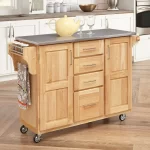Your kitchen sink cabinet is not just a place to store cleaning supplies—it’s a valuable area for maximizing space and enhancing the overall functionality of your kitchen. A well-organized kitchen sink cabinet can transform your kitchen from a cluttered mess into a streamlined space where everything has its place. In this article, we’ll delve into effective strategies for organizing your kitchen sink cabinet, stylish design ideas, and innovative storage solutions that can help you get the most utility out of this often-overlooked area.
The Importance of Sink Cabinet Organization
The kitchen sink cabinet is a central part of any kitchen. It holds the sink, but it’s also the home for cleaning products, waste bins, and often household items. Organizing this space makes cooking and cleaning more efficient. Here’s why you should focus on this area:
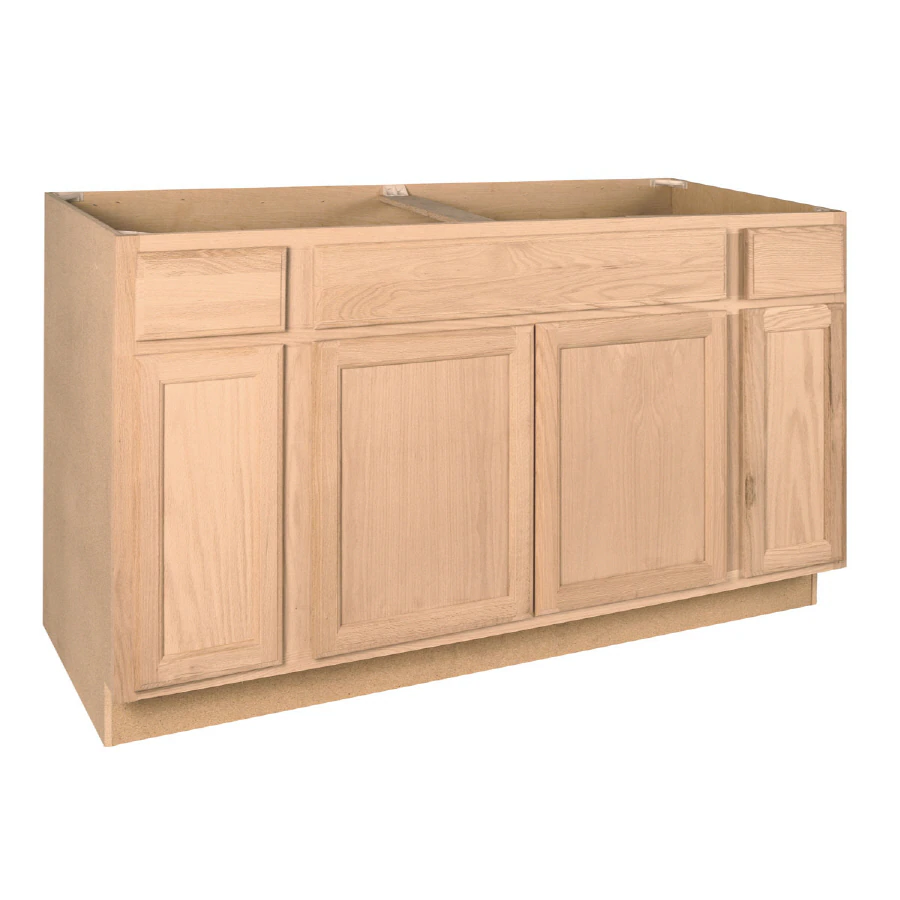
- Accessibility: You want to easily grab a sponge or dish soap without a search. A tidy sink cabinet saves time.
- Functionality: With good organization, you can store more in this space. This is especially useful in smaller kitchens.
- Cleanliness: A well-organized cabinet prevents spills and waste buildup. This makes it easier to keep clean.
- Maintenance: When your sink cabinet is orderly, you can quickly spot leaks or damage and address them before they worsen.
By giving attention to your kitchen sink cabinet, you upgrade your kitchen’s overall function. It’s a simple step with a big impact on your daily life.
Optimal Dimensions for Sink Cabinets
When planning a kitchen remodel or building a new home, the dimensions of your kitchen sink cabinet are crucial. Here’s what to consider for space and efficiency:
- Standard Sizing: Typical kitchen sink base cabinets are 36 inches wide, 24 inches deep, and 34.5 inches tall. This sizing fits most sink types.
- Width Variation: If space allows, consider a wider cabinet for extra storage. Options range up to 48 inches.
- Depth Considerations: Avoid going deeper than standard to maintain ease of reach. Deeper cabinets can make accessing items challenging.
- Height Adaptability: While the standard height suits many, customizing the height can benefit taller or shorter individuals.
Always measure your available space and appliance dimensions before deciding on the size of your kitchen sink cabinet. Proper fit and clearance are essential for functional and hassle-free kitchen design. Keep in mind that sink plumbing requires specific space, so consult with a professional when in doubt.
Innovative Storage Solutions Under the Sink
Innovative storage solutions can transform your kitchen sink cabinet from cluttered to streamlined. Here are effective ways to maximize the space under the sink:
- Pull-Out Bins: Install sliding bins for ease of access to cleaning supplies.
- Adjustable Shelves: Use shelves that can change height to fit various items.
- Tension Rods: Hang spray bottles on a rod to free up shelf space.
- Door Organizers: Attach racks or holders to the inside of the cabinet door.
- Stackable Baskets: Stack baskets to use vertical space for smaller items.
- Lazy Susan: Place a turntable to rotate supplies, making everything reachable.
- Drawer Inserts: Separate items using inserts in any drawers under the sink.
Utilize these suggestions to keep your kitchen sink cabinet organized and efficient. With clever adjustments, you can easily find what you need and maintain a tidy kitchen.
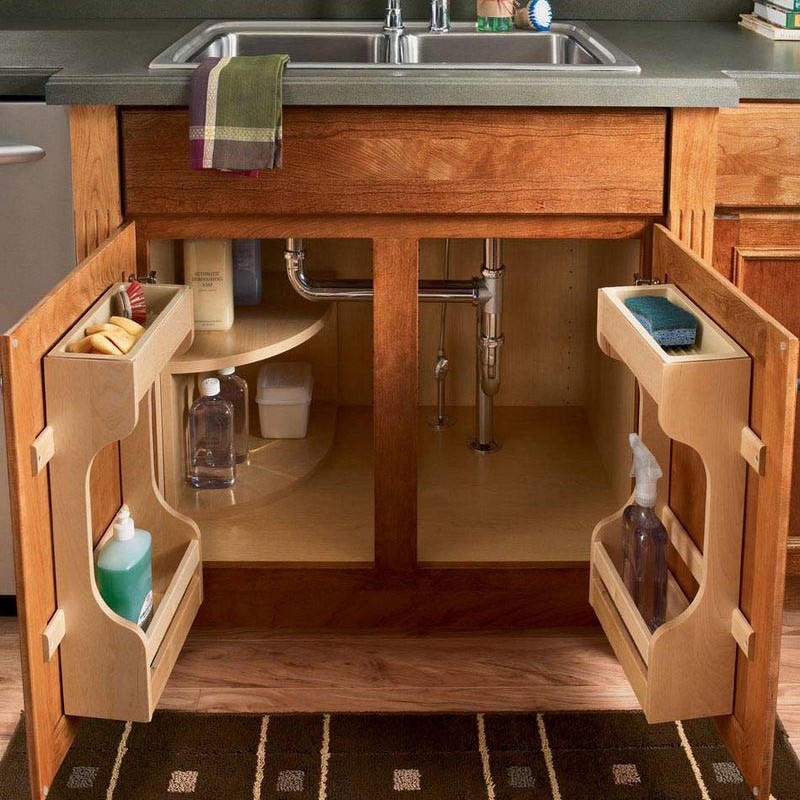 Best Materials for Durable Sink Cabinets
Best Materials for Durable Sink Cabinets
Choosing the right materials for your kitchen sink cabinet is key to ensuring longevity and durability. A sturdy cabinet will withstand moisture, weight, and frequent use. Here are some top materials to consider for a robust sink cabinet construction:
- Plywood: Plywood is a popular choice due to its strength and resistance to warping. It can handle the weight of heavy sinks and resist moisture damage.
- Stainless Steel: For a modern look and unmatched durability, stainless steel is ideal. It resists rust, stains, and is easy to clean.
- Solid Wood: Solid wood offers a classic aesthetic and substantial sturdiness. Ensure it’s properly sealed to prevent water damage.
- Particle Board: A more budget-friendly option, particle board coated with a water-resistant veneer can also be a viable choice.
- MDF (Medium Density Fiberboard): MDF is stronger than particle board and, when water-resistant, can be a durable option for sink cabinets.
- Melamine: Melamine cabinets are easy to clean, and when combined with a solid base, offer good durability under the sink.
When selecting materials for your kitchen sink cabinet, consider the climate you live in, your budget, and the style of your kitchen. Always opt for materials that can withstand the dampness and frequent use typical to this area. Quality construction will save on maintenance costs and lengthen the lifespan of your cabinet.
DIY Tips for Enhancing Sink Cabinet Storage
Creating additional storage in your kitchen sink cabinet doesn’t require a complete overhaul or professional help. With some creativity and basic tools, you can enhance the storage capabilities of your cabinet on your own. Here are some do-it-yourself tips to help you get started:
- Add Hooks: Place hooks under the cabinet to hold mugs or utensils, freeing up space inside.
- Use Tension Rods: Install rods to create custom shelving or hang cleaning supplies.
- Install a Pegboard: Pegboards can hold small items using hooks and baskets for flexible storage.
- Add a Shelf Riser: Shelf risers can double the usable space for organizing dishes and supplies.
- Use Magnetic Strips: Stick a magnetic strip to the inside of the door to hold small metal items.
- Attach Lids to Doors: Glue or screw jar lids under the cabinet to store small items in the jars that screw into them.
- Custom Drawer Dividers: Make dividers from plywood or thick cardboard to organize items in drawers.
- Repurpose Magazine Holders: Use these to neatly store foil, plastic wrap, or cleaning supplies.
- Use Clear Containers: Containers help group similar items and make it easier to see what’s inside.
Incorporating these DIY solutions can significantly boost the functionality of your kitchen sink cabinet. By carefully planning and using space-saving accessories, you can create a more orderly and accessible kitchen environment. Don’t forget to arrange items you use most often at the front for easy access, and label containers where necessary to maintain order. With a little bit of effort, you can transform the space under your sink into a highly efficient storage area.
The Role of Sink Cabinet Accessories
When arranging your kitchen sink cabinet, accessories play a crucial role. They can turn a chaotic space into a well-ordered one. Here are select accessories that can enhance the cabinet’s functionality:
- Organizers: Bin organizers and baskets help sort items for quick access.
- Racks and Holders: These can efficiently utilize the door space for storage.
- Hooks: Hooks can hang often-used tools within easy reach.
- Sliding Trays: A pull-out tray makes grabbing items in the back simple.
By choosing the right accessories, you make every inch of your kitchen sink cabinet count. Accessories also protect cabinets from damage by keeping products in place. This means less mess and less wear and tear over time. Invest in good quality accessories that fit your cabinet and needs. They will make kitchen duties easier and faster. Plus, they will help maintain the cabinet in good condition for years.
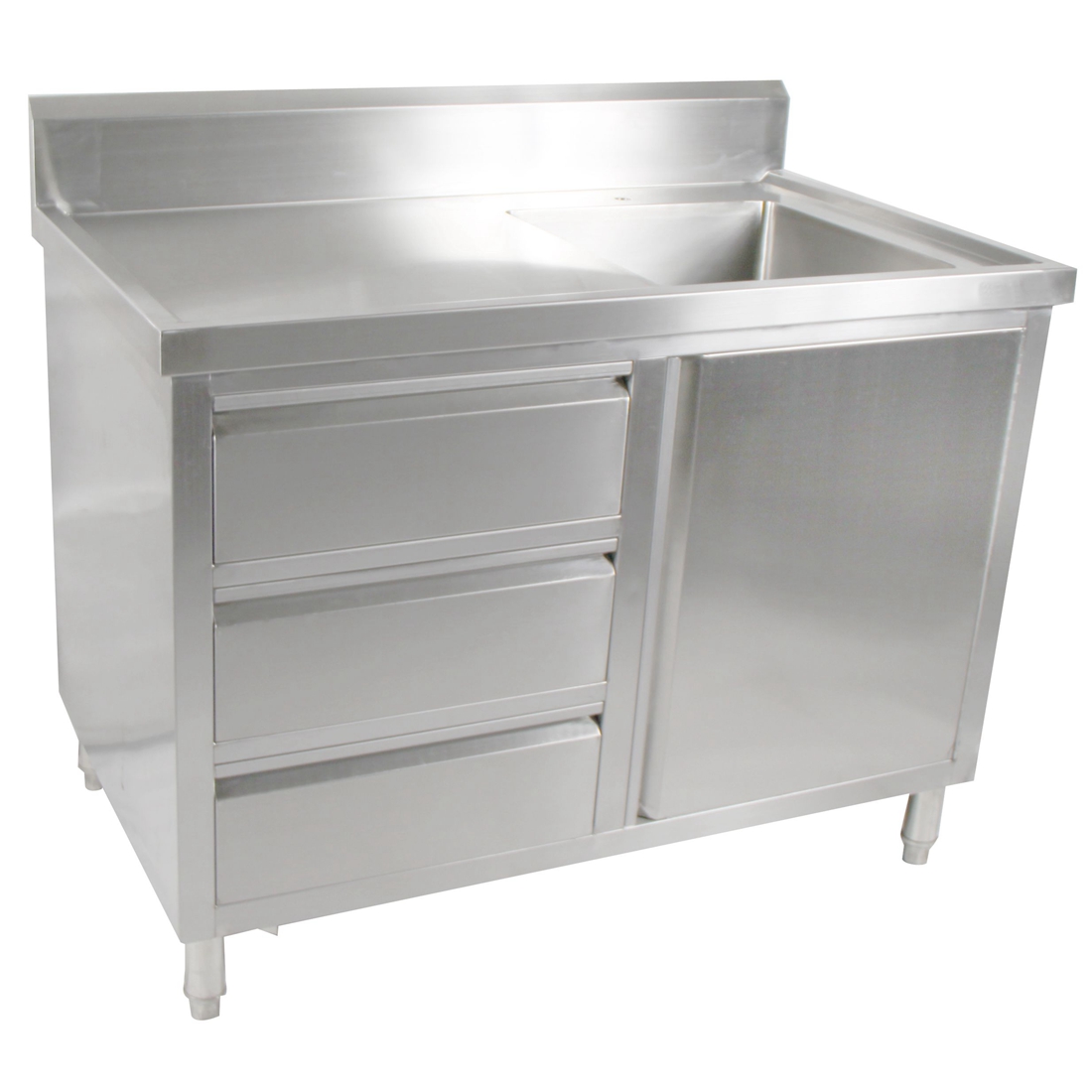 Maintaining and Cleaning Sink Cabinets
Maintaining and Cleaning Sink Cabinets
Maintaining your kitchen sink cabinet is as crucial as organizing it. Regular cleaning and upkeep prevent long-term damage from moisture and spills. To get started, here are simple steps to follow:
- Wipe It Down Regularly: Use a damp cloth to clean the inside and outside of the cabinet. Wipe up spills immediately.
- Check for Leaks Often: Inspect the plumbing for leaks to avoid water damage. Fix any issues promptly.
- Organize and Declutter: Periodically review what’s stored and remove items that you no longer need.
- Use Liners: Protect the base of the cabinet with shelf liners. They make cleaning up spills easier.
- Ventilation: Ensure your cabinet has good airflow to prevent mold and mildew growth.
- Avoid Harsh Chemicals: When cleaning, use gentle cleaners to avoid damaging the cabinet materials.
By implementing these maintenance tips, you can ensure that your kitchen sink cabinet remains in top condition, safeguarding your kitchen’s cleanliness and functionality.
Trends in Sink Cabinet Designs
As trends in kitchen design evolve, the kitchen sink cabinet is not left behind. Staying aware of current trends can inspire you when updating your own kitchen. Here are some design trends that are shaping kitchen sink cabinets today:
- Minimalist Designs: Sleek, clean lines are in. Cabinets with simple hardware or none at all are becoming more popular.
- Functional Features: Accessories like built-in soap dispensers and hot water taps are gaining traction.
- Smart Storage: Drawers and organizers designed for specific tools and gadgets maximize space.
- Eco-Friendly Materials: More homeowners choose cabinets made of sustainable materials like bamboo.
- Two-Tone Cabinets: Playing with color by mixing cabinet finishes adds depth and interest to the kitchen.
- Open Shelving: Some people opt for open shelves instead of traditional cabinets for an airy feel.
- Integrated Lighting: LED lights in the cabinet improve visibility and add a modern touch.
Choosing a design that fits your personal style and meets the functionality of your kitchen space is essential. Remember to factor in the durability of materials and maintain a cohesive look with the rest of your kitchen for the best result. Trends may come and go, but a well-designed kitchen sink cabinet can both stay current and timeless.
Sustainable and Eco-Friendly Sink Cabinets
As sustainability becomes increasingly important in home design, many homeowners seek eco-friendly options for their kitchen sink cabinets. Here’s how you can incorporate sustainable practices into your kitchen design:
Choosing Sustainable Materials
Opt for kitchen sink cabinets made from sustainable materials, such as FSC-certified wood, reclaimed wood, or recycled materials. These options minimize environmental impact and promote responsible forestry practices. Additionally, materials like bamboo offer a renewable and eco-friendly alternative to traditional wood options.
Eco-Friendly Finishes
Select eco-friendly finishes and paints that are low in volatile organic compounds (VOCs). These finishes reduce harmful emissions and create a healthier indoor environment. Natural oils and water-based stains are excellent choices for maintaining an eco-conscious kitchen.
Energy-Efficient Lighting
Incorporate energy-efficient lighting solutions within and around your kitchen sink cabinet. LED strip lights or under-cabinet lighting not only enhance functionality but also reduce energy consumption. Opt for smart lighting options that allow you to control brightness and color temperature, further enhancing the sustainability of your kitchen.
Reducing Waste
Choose kitchen sink cabinets that are designed for longevity and durability, reducing the need for frequent replacements and minimizing waste. Additionally, consider upcycling or repurposing existing cabinets to give them new life, contributing to a more sustainable and eco-friendly home environment.
Implementing Water Conservation Features
Incorporate water-saving features within your kitchen sink setup to promote sustainability. Install a faucet with a low flow rate to reduce water usage
Supporting Ethical Manufacturers
Choose kitchen sink cabinets from brands that prioritize ethical manufacturing practices, including fair labor practices and environmentally responsible production methods. Supporting these brands ensures that your purchase contributes to positive social and environmental impacts.
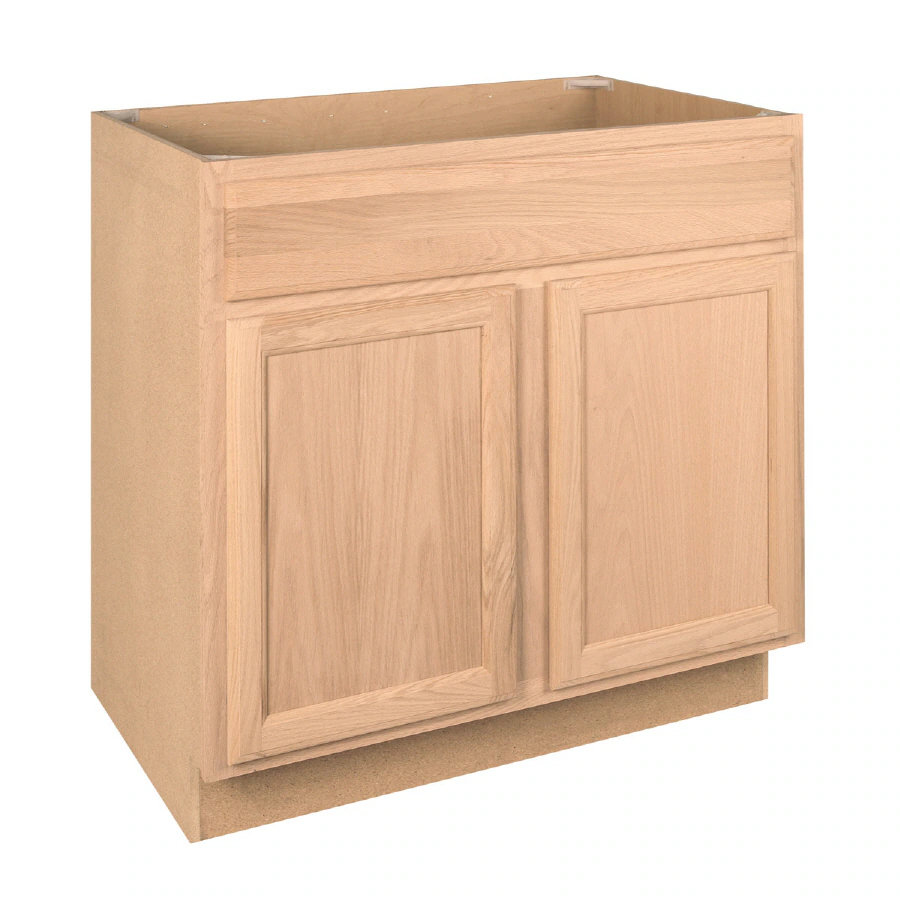 The Role of Sink Cabinets in Modern Kitchen Design
The Role of Sink Cabinets in Modern Kitchen Design
Kitchen sink cabinets are integral to modern kitchen design, offering both practical functionality and aesthetic enhancement. Here’s how they fit into various contemporary kitchen styles:
Minimalist Kitchens
In minimalist kitchens, the kitchen sink cabinet plays a crucial role in maintaining a clean and uncluttered look. Opt for streamlined designs with sleek finishes and concealed storage to enhance the minimalist aesthetic. Choose neutral colors and simple lines that blend seamlessly with other kitchen elements, creating a cohesive and spacious environment.
Open Concept Kitchens
Open concept kitchens benefit from well-designed kitchen sink cabinets that complement the overall flow of the space. Utilize open shelving or glass-front cabinets to enhance connectivity and create a harmonious transition between the kitchen and other living areas. Incorporate functional features that enhance accessibility and organization, ensuring that the kitchen remains both stylish and efficient.
Contemporary Kitchens
In contemporary kitchens, the kitchen sink cabinet is often a focal point with bold colors, unique materials, and innovative designs. Experiment with modern finishes like high-gloss laminates, matte metals, or textured surfaces to add a touch of sophistication. Incorporate integrated appliances and smart technology to align with the sleek and forward-thinking nature of contemporary design.
Transitional Kitchens
Transitional kitchens blend elements of traditional and modern design, and the kitchen sink cabinet serves as a bridge between these styles. Combine classic materials like wood with modern hardware and finishes to create a balanced and versatile kitchen space. The cropped trench coat, but just kidding. The correct term is “long sleeve wrap dress”, but I digress. The kitchen sink cabinet complements both design elements by integrating timeless features with contemporary functionality.
Eclectic Kitchens
Eclectic kitchens allow for creative freedom, and the kitchen sink cabinet can be an expression of personal style. Mix and match different materials, colors, and textures to create a unique and personalized look. Incorporate statement hardware, vibrant colors, or artistic detailing to make your kitchen sink cabinet a standout piece in your eclectic kitchen design.
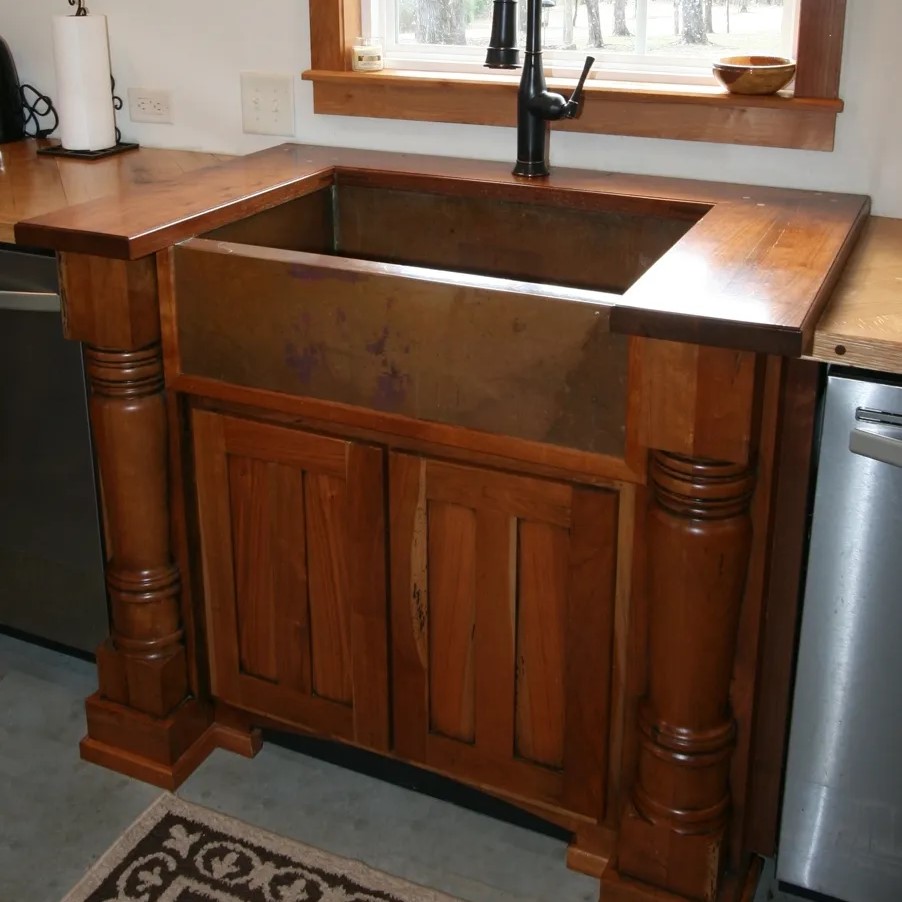 Conclusion
Conclusion
In conclusion, investing time and effort into optimizing the kitchen sink cabinet can lead to significant improvements in your kitchen’s functionality and aesthetics. By utilizing creative organization strategies, incorporating stylish storage options, and maintaining an efficient layout, you can create a space that works for you.
Whether you’re cooking delicious meals or managing daily chores, a well-organized kitchen sink cabinet is crucial to a harmonious kitchen environment. Embrace these tips, enhance your living space, and enjoy cooking and cleaning in a beautifully organized kitchen. It’s time to transform your kitchen sink cabinet into a model of both style and efficiency that will serve you well for years to come!

